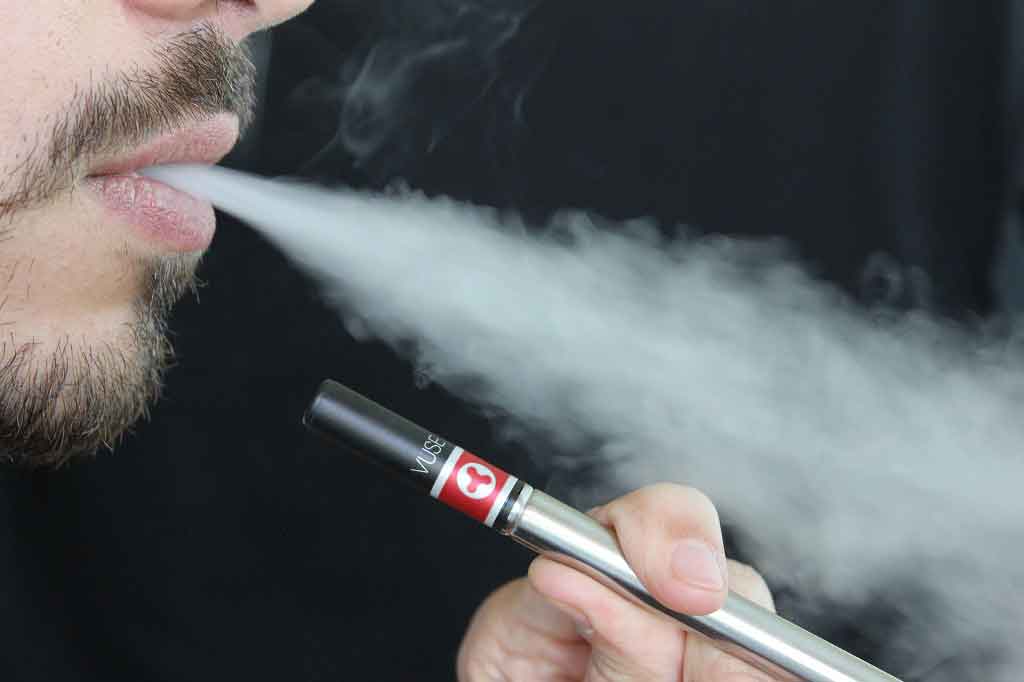Study finds e-cigarettes may make lungs vulnerable to infection
Heart and lungs

'E-cigarettes are MORE harmful than first feared, experts warn' reports The Sun.
"E-cigarettes are more harmful than first feared, experts warn," reports the Sun.
The news comes from a laboratory study that looked into the effects of e-cigarette liquid on human lung cells.
Researchers studied a type of lung cell called alveolar macrophages. These are also called dust cells, as they prevent irritants such as dust and infectious bacteria passing into the airways.
These cells are also involved in lung inflammation, a biological defence mechanism that protects the lungs against infections.
To test the effect of e-cigarette liquid on these cells, the researchers created a device to generate puffs of vapour to mimic what happens when people use e-cigarettes.
Cells exposed to the condensed liquid that forms after vaping were a lot less healthy than those exposed to just the liquid held in the e-cigarette device.
This was particularly the case when liquid containing nicotine was used, rather than nicotine-free liquid.
Around 38% of cells exposed to vapour that contained nicotine died, compared with 6% of cells not exposed.
This study gives us some interesting insights into how e-cigarette liquid may affect lung cells.
But the study involved a very small number of cell samples, and we can't draw firm conclusions about its effects on health without data from studies on people who use e-cigarettes.
There's no doubt e-cigarettes are far healthier than smoking tobacco.
But nicotine replacement therapies, such as patches and gum, are specifically designed to gradually wean people off nicotine.
These might be a better option for people who want to both quit smoking and treat their underlying nicotine addiction.
Read more about stop smoking treatments.
Where did the story come from?
The study was carried out by researchers from the University of Birmingham and Swansea University in the UK, and the SUNY Downstate Medical Center in the US.
It was funded by the UK Medical Research Council and the British Lung Foundation.
The study was published in the peer-reviewed journal Thorax.
In general, the UK media articles were fairly balanced, and generally gave enough detail about the research to clarify that it was based on laboratory findings.
But the headlines tended towards more alarming statements, such as the Mirror saying: "Vaping can cause serious lung damage and should be treated with caution".
These claims aren't supported by the study's results, as it only looked at lung cells in isolation over a 24-hour period.
What kind of research was this?
In this laboratory study, researchers tested the effects of exposure to e-cigarette liquid on human alveolar macrophage cells.
Laboratory studies are an excellent way of trying to understand how something that may be beneficial or harmful directly affects human cells or tissue samples.
But these studies can't tell us exactly how such exposures affect the body as a whole when different groups of cells or tissues are working together.
Ultimately, to fully understand the possible negative effects of vaping on human lungs and health, we'd need to look at studies of people.
For example, it might be valuable to carry out a long-term cohort study comparing the lungs and immune systems of e-cigarette users with those of non-users and cigarette smokers.
What did the research involve?
The researchers were interested in how e-cigarette vapour condensate (the liquid that forms in the lungs after vaping) affected the alveolar macrophages under laboratory conditions.
The alveolar macrophage cell samples were taken from 8 people who'd never smoked (5 men and 3 women).
None of the people had any past history of asthma or chronic obstructive pulmonary disease (COPD).
Researchers used a range of e-cigarette liquids, with and without nicotine. They only looked at flavourless versions to avoid the results being affected by the flavourings.
A second-generation electronic nicotine delivery system (vaping equipment based on the pen model, rather than a cigarette) was used to generate the vapour, as this type is in common use in the UK.
The researchers created a system to generate puffs of vapour to try to make their experiment as close to real life as possible.
To mimic human behaviour, they generated puffs every 30 seconds that lasted for 3 seconds each.
The researchers created a way to cool and collect the vapour as condensed liquid, and then carried out a series of experiments where the lung cells were exposed to both the unvaped e-cigarette liquid and the liquid created from condensing the vapour.
Cells were exposed to these for several hours at a time and then tested for signs of damage or inflammation.
What were the basic results?
The liquid collected from the condensed vapour (which forms in the lungs during vaping) was more damaging to cells than the unvaped liquid held in the e-cigarette device.
More damage occurred with each increase in concentration of the liquid.
Looking at viability (i.e. how many of the cells remained healthy) after 24 hours of exposure to liquid or condensate:
- cells exposed to unvaped liquid had 78.8% viability (rising to 84.5% viability in nicotine-free liquid)
- cells exposed to the liquid created from vaping only had a viability of 18.2% (rising to 62.8% for nicotine-free condensate)
The process by which cells die (apoptosis) was triggered in 6.1% of cells exposed to liquid without nicotine, compared with 17.4% exposed to vaped liquid without nicotine.
Cell deaths increased to 37.7% when exposed to vaped liquid containing nicotine.
There were also more signs of lung inflammation with the vaped liquid.
How did the researchers interpret the results?
The researchers highlight that the method of vapour collection they created was a new tool that could help future studies.
They note that this is the first study to show that the concentration of vapour affects the response of alveolar macrophage cells, as well as whether or not the vapour contains nicotine.
They recommend further research to test their findings in people who use e-cigarettes, and suggest that we shouldn't just assume e-cigarettes are completely safe.
Conclusion
This study provides some interesting data on what can happen to human cell samples when exposed to e-cigarette vapour in the lab.
But the results can only tell us so much, as they weren't from studies in people.
The number of different cell samples used was also very small (only 8 people) and we might have seen slightly different results if more cell samples had been used.
The main limitation of this study is that it doesn't directly compare the effects of vaping versus the effects of smoking on the lungs.
One important point is that e-cigarettes are marketed as an alternative to smoking tobacco and not as a way to quit using nicotine (the substance that makes tobacco so addictive).
So while e-cigs are certainly healthier than smoking tobacco, they may not help you quit your nicotine addiction.
Nicotine gum, patches and throat sprays, on the other hand, are designed to gradually reduce your daily exposure to nicotine, helping you quit the habit once and for all.






 Subscribe
Subscribe Ask the doctor
Ask the doctor Rate this article
Rate this article Find products
Find products








